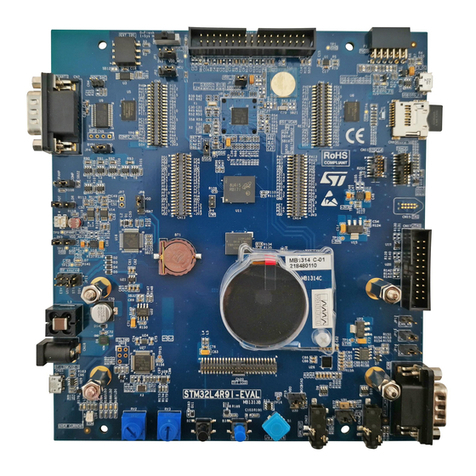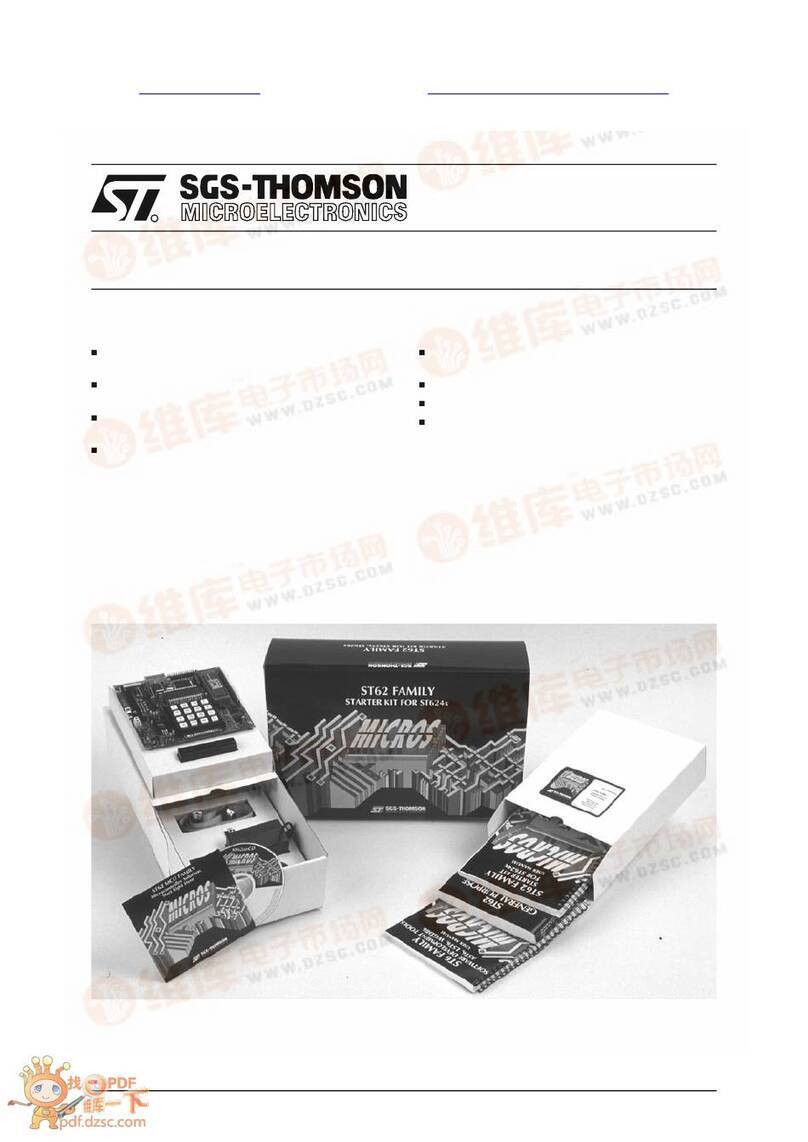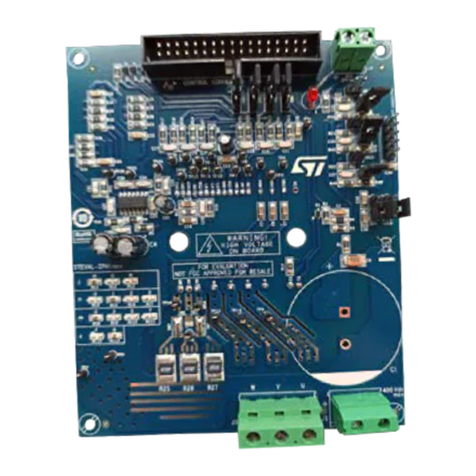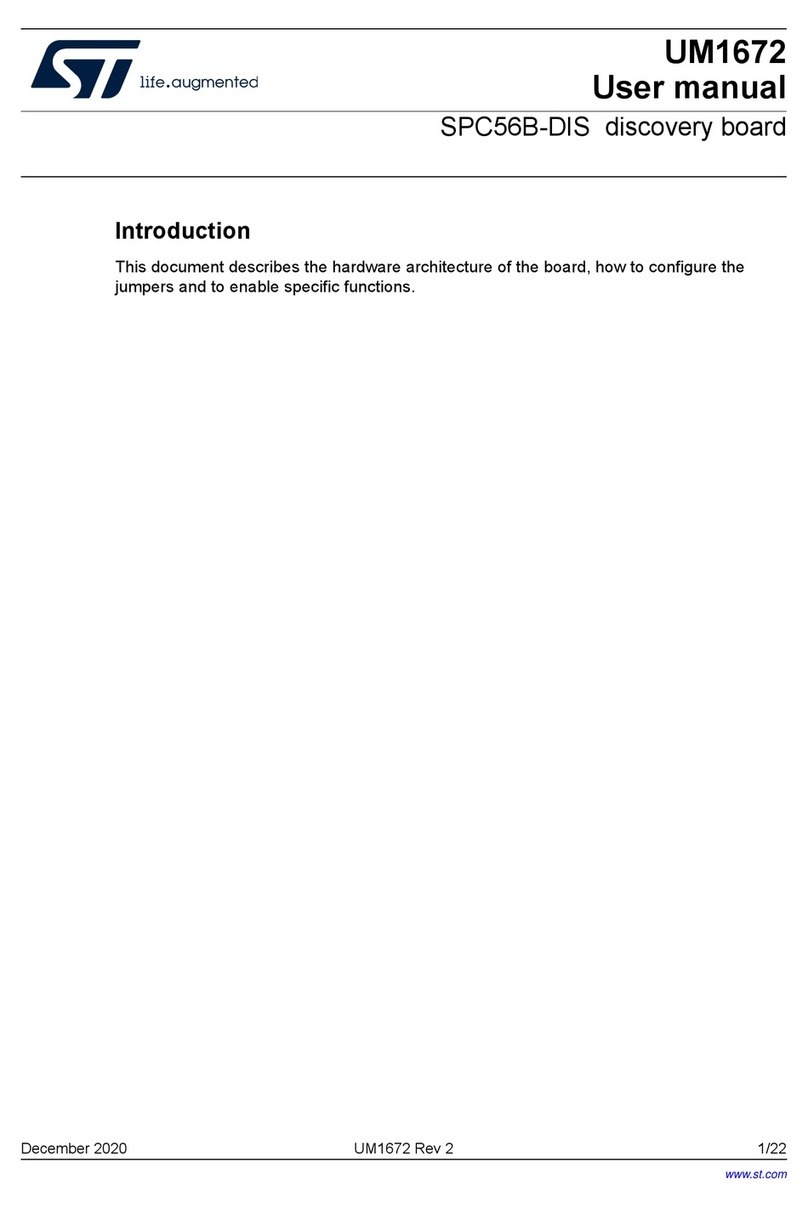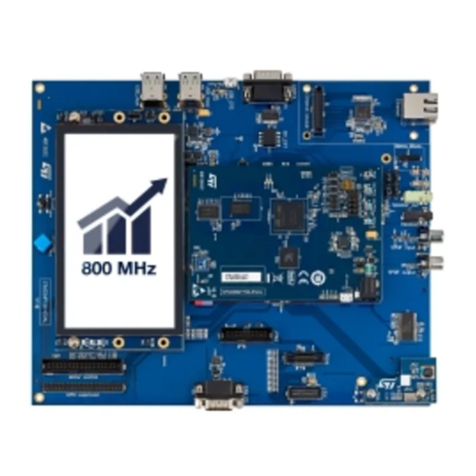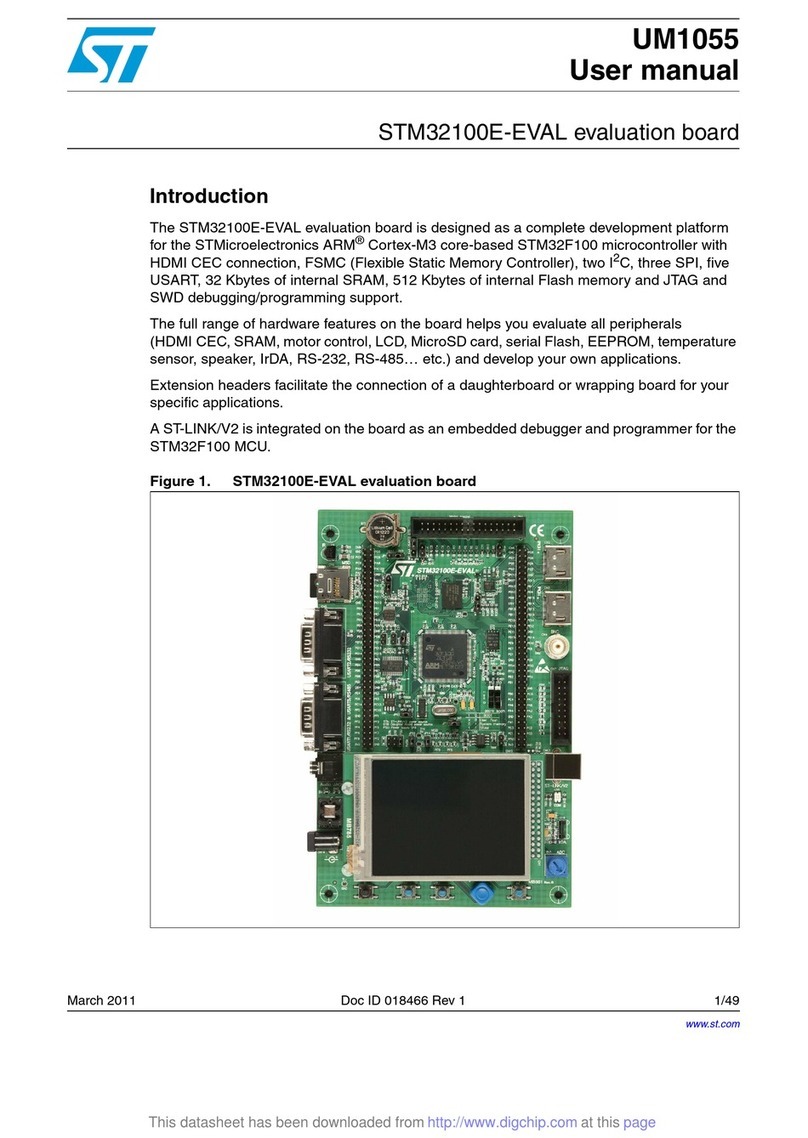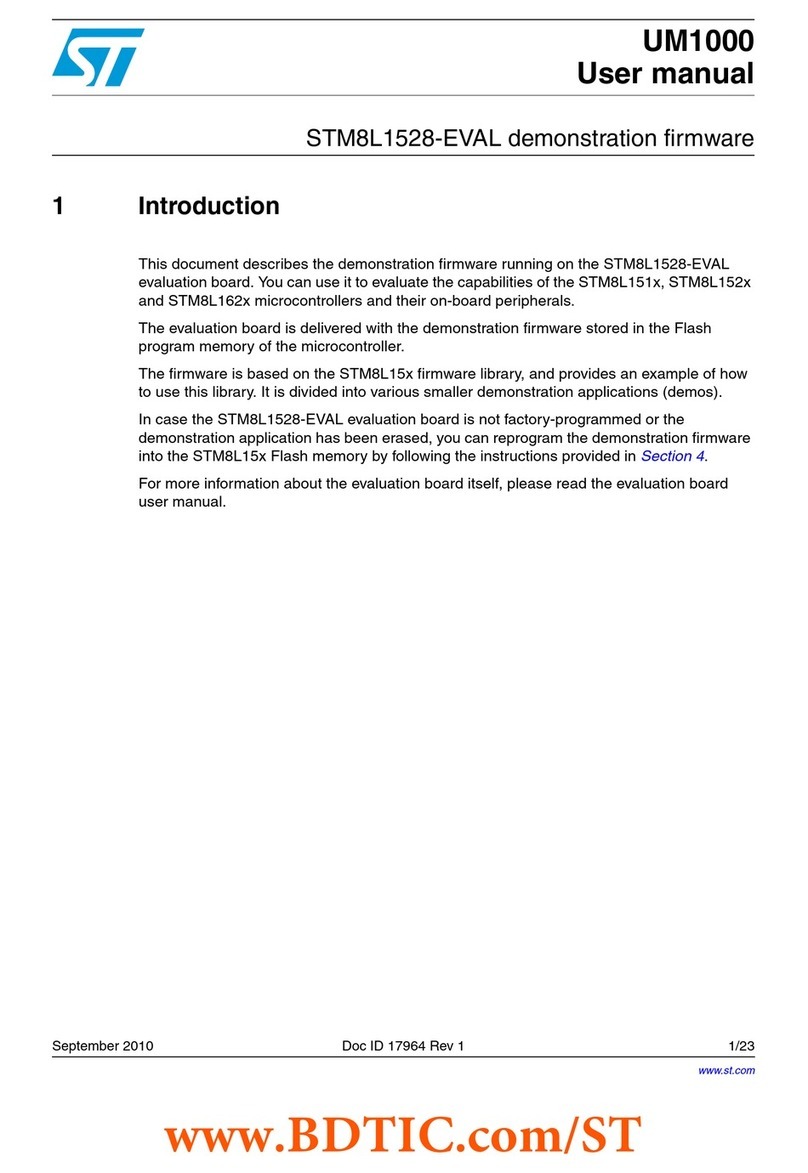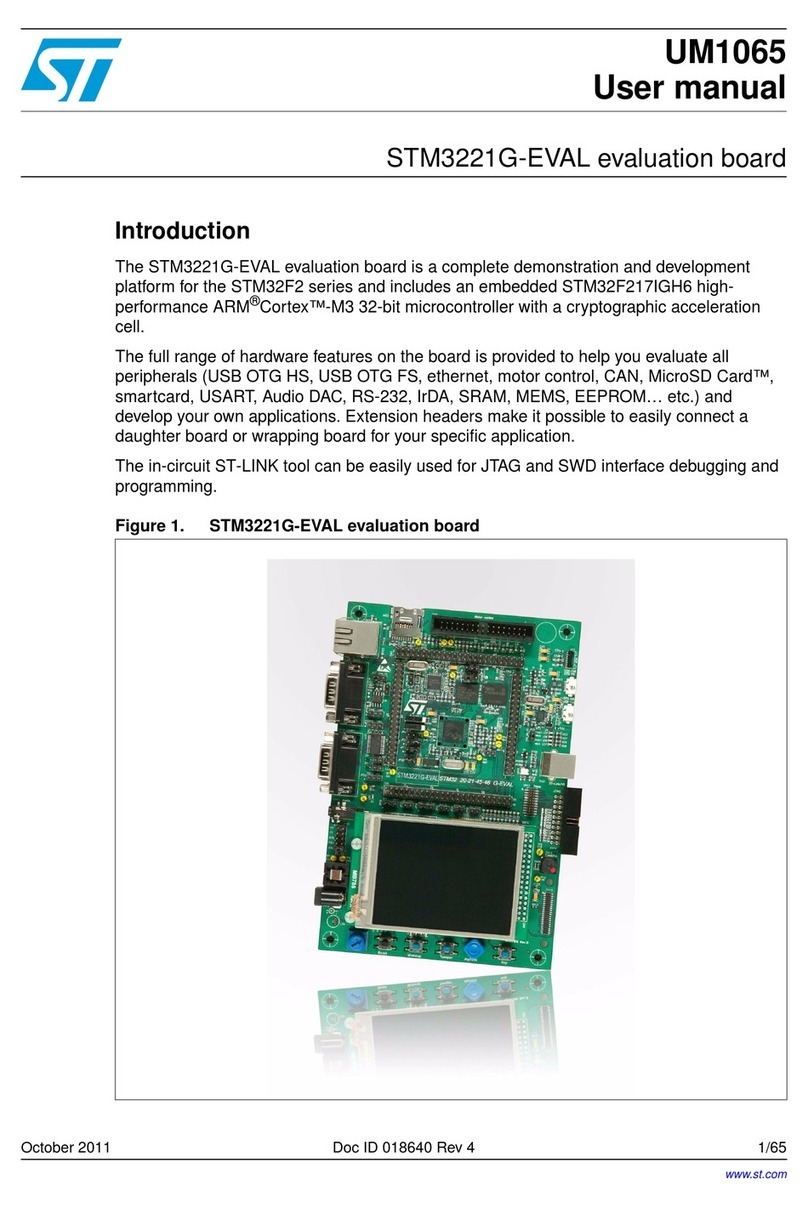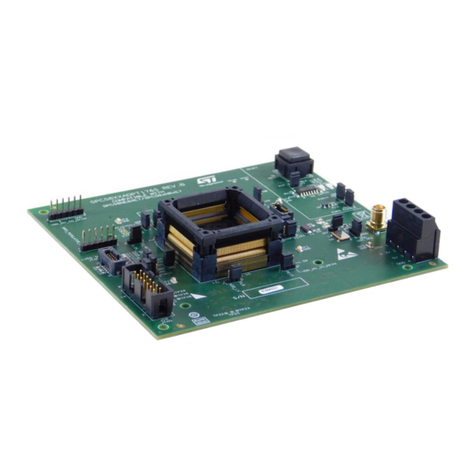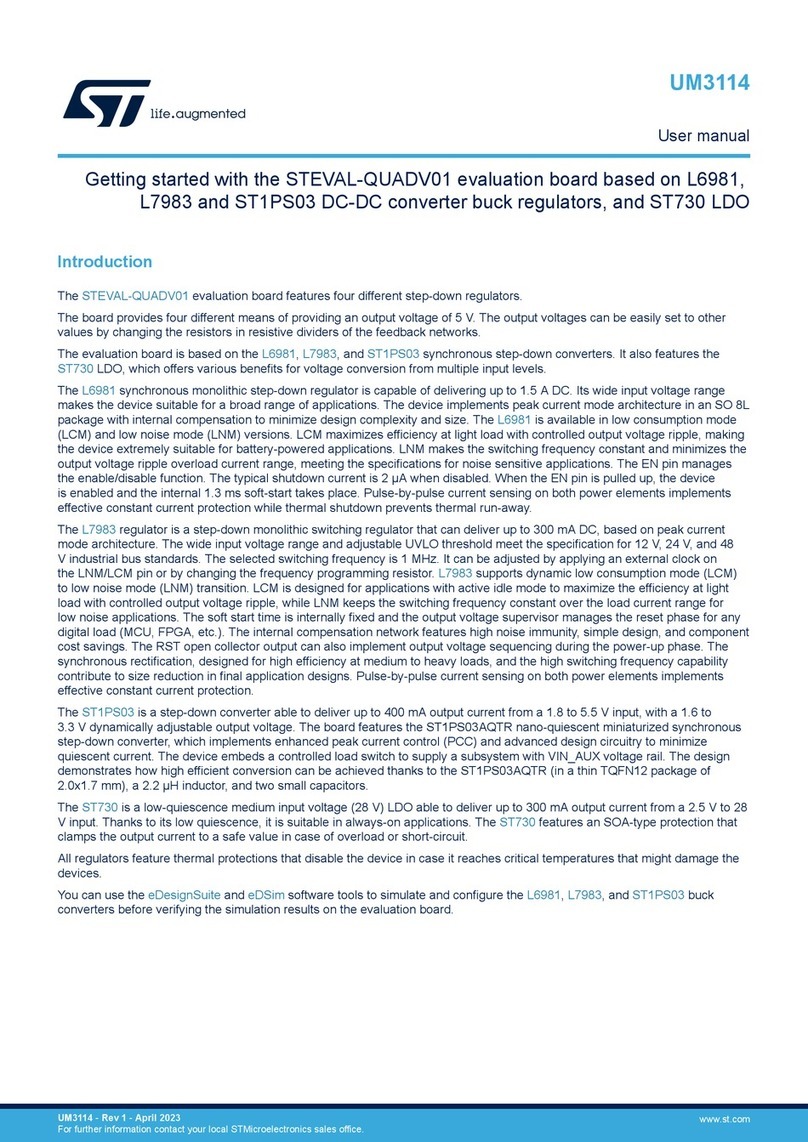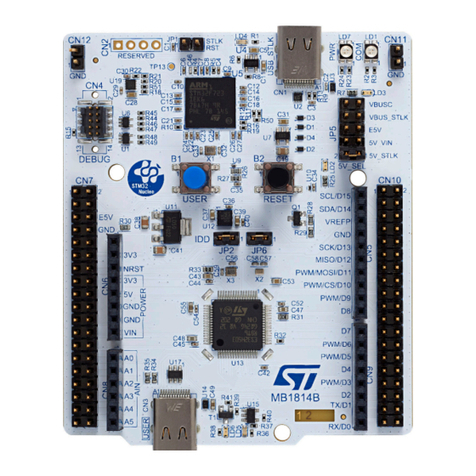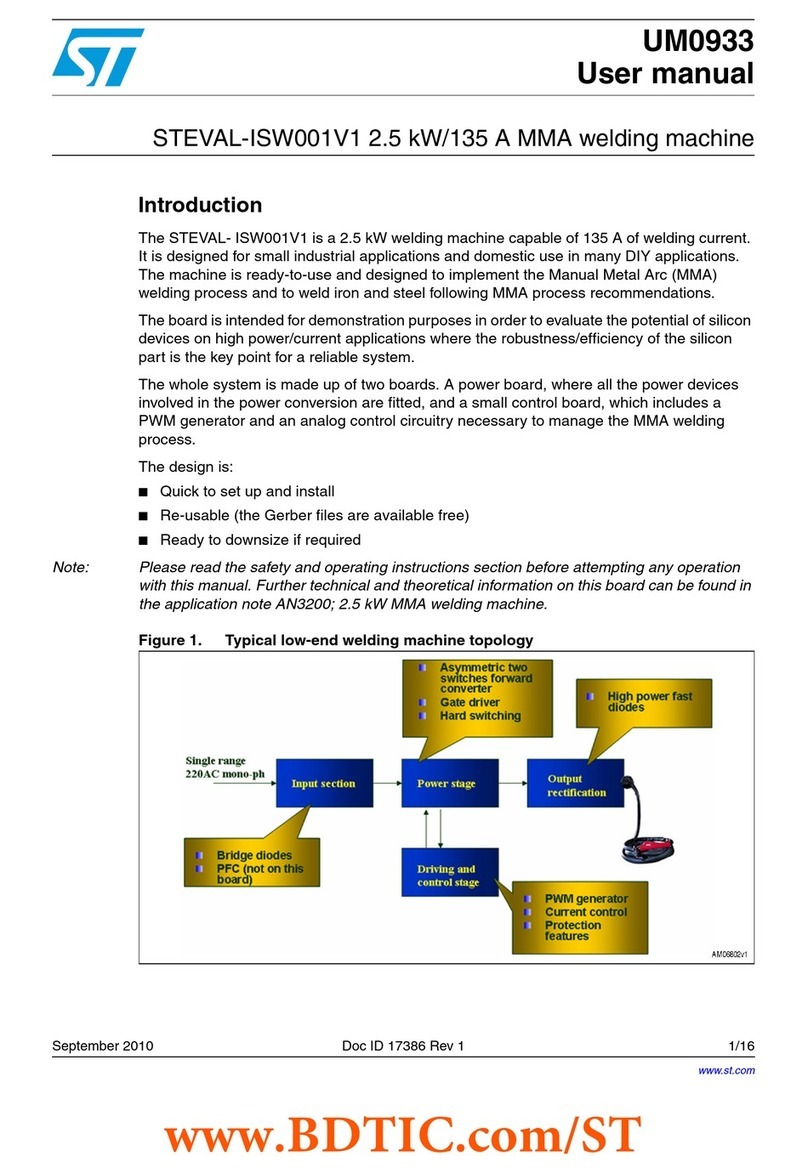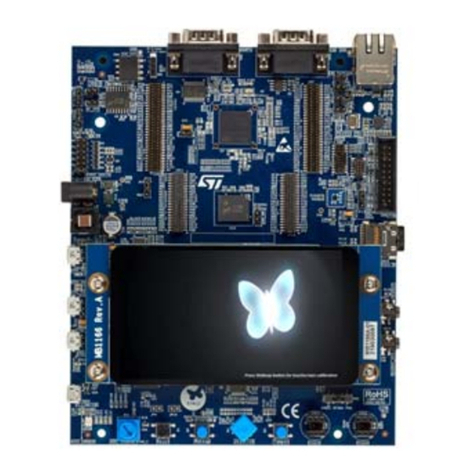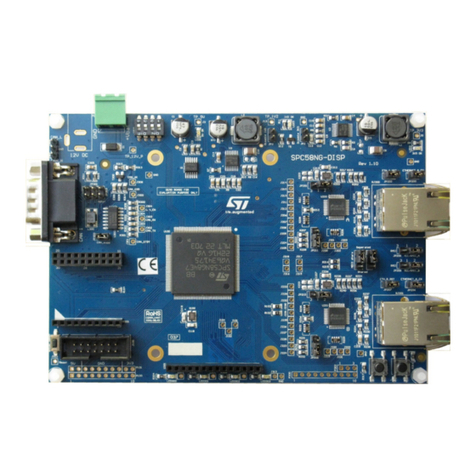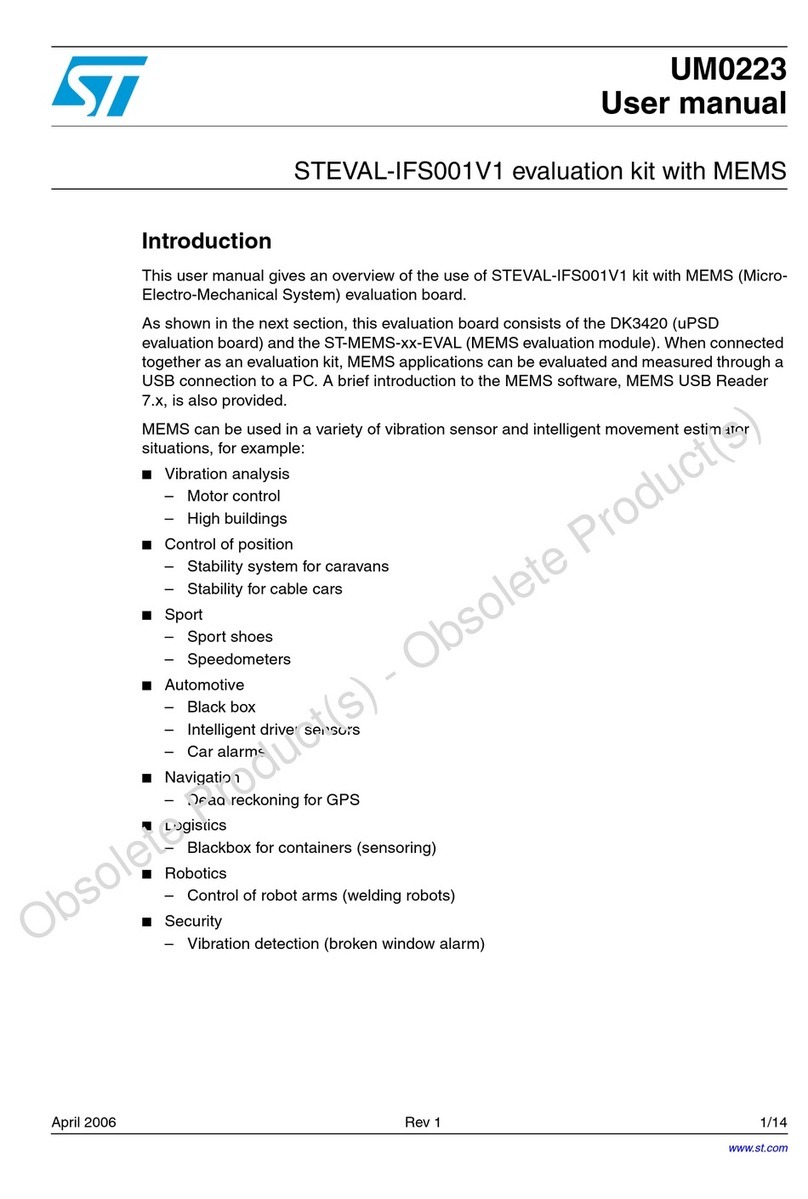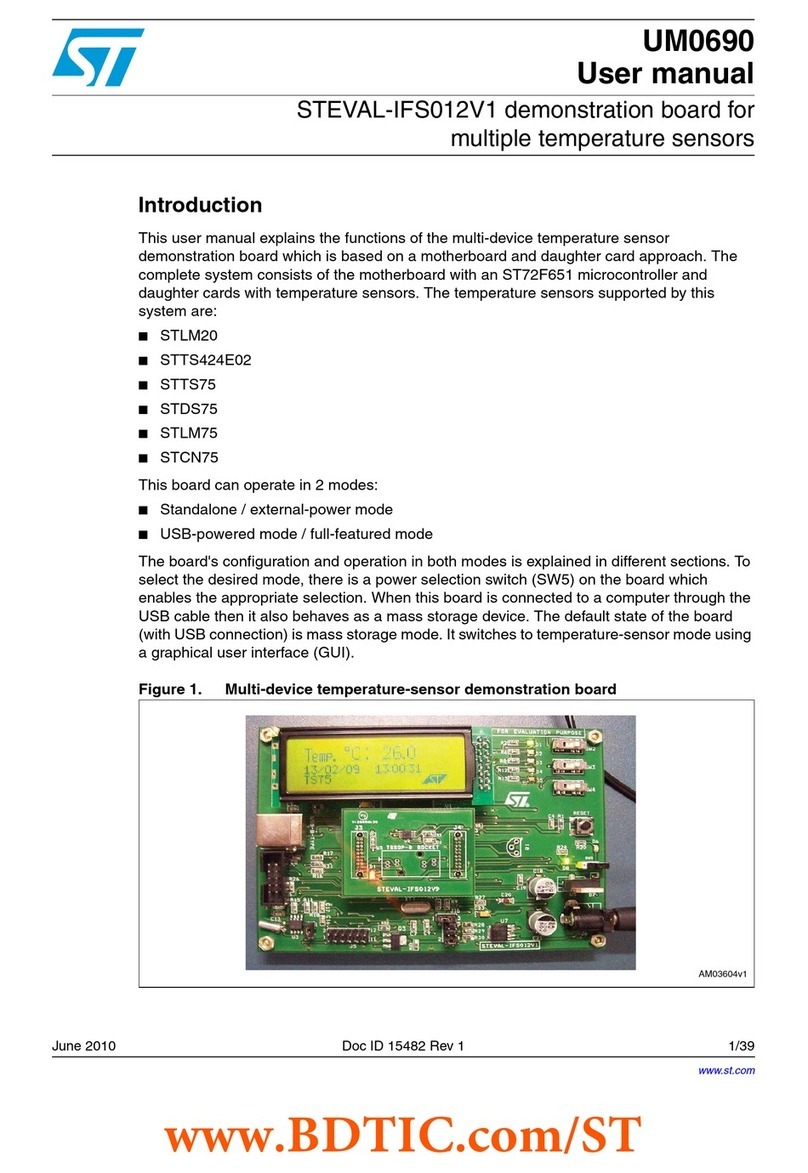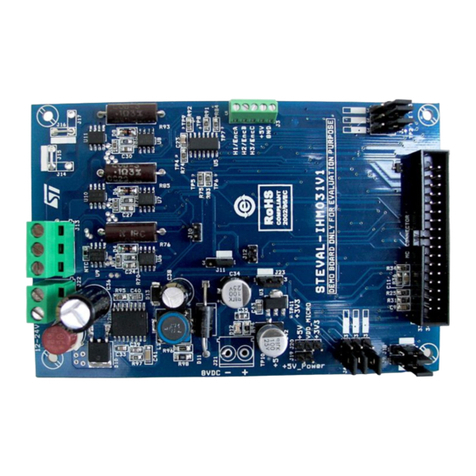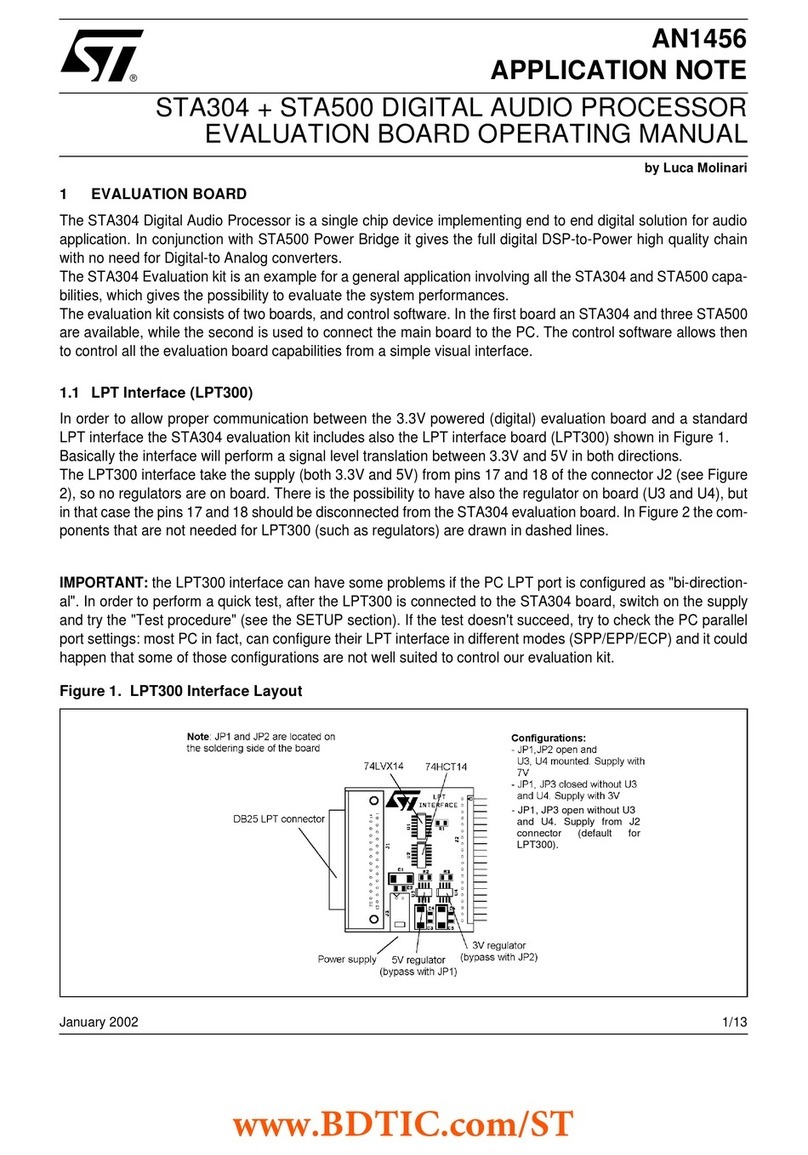
7Regulatory compliance
Formal Notice Required by the U.S. Federal Communications Commission
FCC NOTICE:
This kit is designed to allow:
(1) Product developers to evaluate electronic components, circuitry, or software associated with the kit to
determine whether to incorporate such items in a finished product and
(2) Software developers to write software applications for use with the end product.
This kit is not a finished product and when assembled may not be resold or otherwise marketed unless all
required FCC equipment authorizations are first obtained. Operation is subject to the condition that this product
not cause harmful interference to licensed radio stations and that this product accept harmful interference. Unless
the assembled kit is designed to operate under part 15, part 18 or part 95 of this chapter, the operator of the kit
must operate under the authority of an FCC license holder or must secure an experimental authorization under
part 5 of this chapter 3.1.2.
The evaluation kit has been designed to comply with part 15 of the FCC Technical Rules. Operation is subject to
the following two conditions: (1) This device may not cause harmful interference, and (2) this device must accept
any interference received, including interference that may cause undesired operation.
This equipment has been tested and found to comply with the limits for a Class B digital device, pursuant to part
15 of the FCC Rules. These limits are designed to provide reasonable protection against harmful interference
in a residential installation. This equipment generates, uses and can radiate radio frequency energy and, if not
installed and used in accordance with the instructions, may cause harmful interference to radio communications.
However, there is no guarantee that interference will not occur in a particular installation.
Standard applied: FCC CFR 47 Part 15 Subpart B. Test method applied: ANSI C63.4 (2014).
Formal Product Notice Required by Industry Canada Innovation, Science and Economic Development
Canada compliance:
For evaluation purposes only. This kit generates, uses, and can radiate radio frequency energy and has not been
tested for compliance with the limits of computing devices pursuant to Industry Canada (IC) rules.
À des fins d'évaluation uniquement. Ce kit génère, utilise et peut émettre de l'énergie radiofréquence et n'a pas
été testé pour sa conformité aux limites des appareils informatiques conformément aux règles d'Industrie Canada
(IC).
This device has been tested with Innovation, Science and Economic Development RSS standards. Operation is
subject to the following two conditions: (1) this device may not cause harmful interference, and (2) this device
must accept any interference received, including interference that may cause undesired operation.
Standard applied: ICES-003 Issue 7 (2020), Class B. Test method applied: ANSI C63.4 (2014).
Cet appareil a été testé pour les normes RSS d'Innovation, Science et Développement économique. L'utilisation
est soumise aux deux conditions suivantes: (1) cet appareil ne doit pas causer d'interférences nuisibles, et (2)
cet appareil doit accepter de recevoir tous les types d’interférence, y comprises les interférences susceptibles
d'entraîner un fonctionnement indésirable.
Norme appliquée: NMB-003, 7e édition (2020), Classe B. Méthode d'essai appliquée: ANSI C63.4 (2014).
Formal product notice required by EU
This device is in conformity with the essential requirements of the Directive 2014/30/EU (EMC) and of the
Directive 2015/863/EU (RoHS).
Standards applied: EN 55032:2015 + A11:2020, EN 55035:2017, EN 61000-6-1 (2007), EN 61000-6-3 (2007) +
A1 (2011), EN IEC 63000:2018
UM2918
Regulatory compliance
UM2918 - Rev 1 page 10/15
